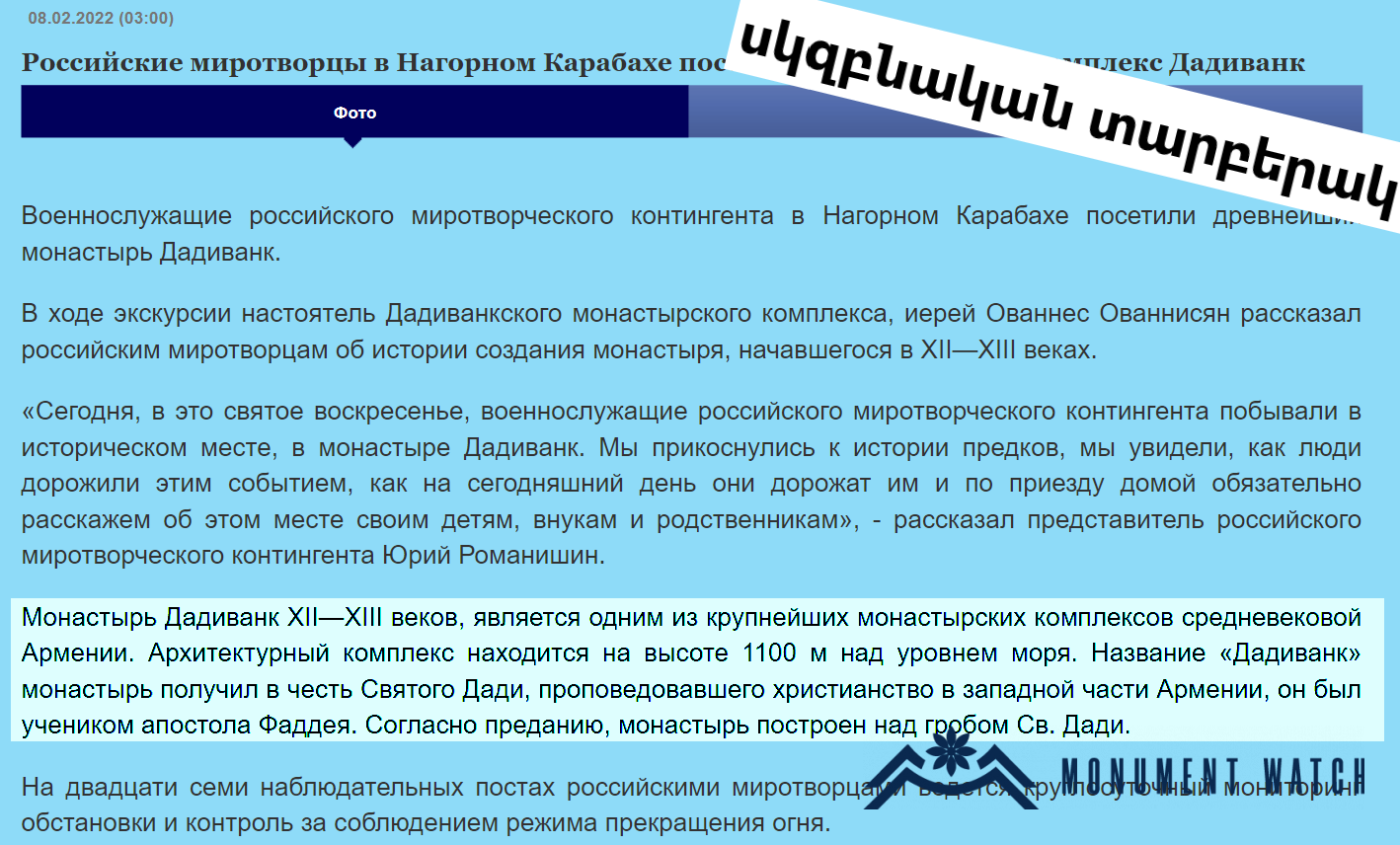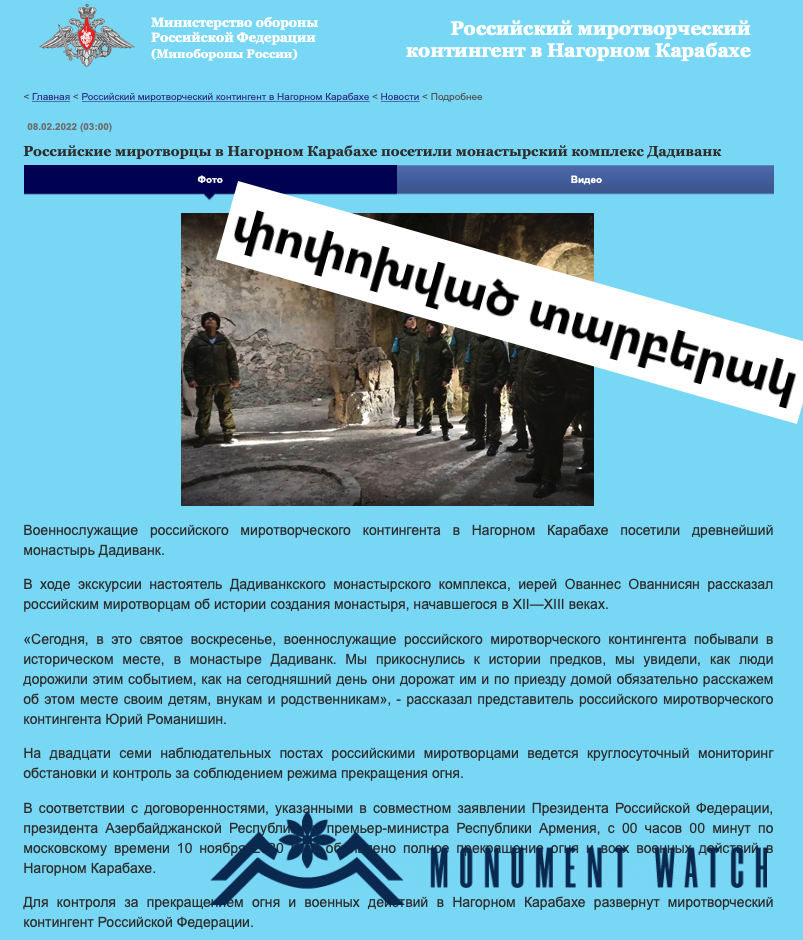When Politics Openly Misrepresents the Cultural Affiliation of Heritage
On February 8, on the official website of the Ministry of Defense of the Russian Federation, a photo and a report were published telling that the Russian peacekeeping military personnel of Nagorno-Karabakh visited the old monastery of Dadivank.
The report noted that during the visit, the parson of the Dadivank monastery complex, priest Hovhannes Hovhannisyan, introduced the history of the monument built in the 12th-13th centuries AD to the Russian peacekeepers. Yuri Romanishin noted that on Holy Sunday the personnel of the Russian peacekeeping contingent touched the history of their ancestors and spiritual values and as soon as they arrive home they would definitely tell their children and grandchildren about this complex and share the feelings they had experienced there.
The original version of this text has been saved on the Internet (fig.), where it has been reported that Dadivank was one of the largest monastic complexes of medieval Armenia of the 12th-13th centuries, that it was named after Saint Dadi, who preached Christianity in the western (should be “eastern”) regions of Armenia and was a disciple of the Apostle Thaddeus. According to legend, the complex was built on the tomb of Saint Dadi. As some news sites confirm, the fragment of the report containing the fact that the Dadivank monastery was Armenian was removed after the initial version.
Our response
It is more than likely that the paragraph with information about the Armenian identity of Dadivank was removed on request or demand of Azerbaijan. And we have the right to think that turning the identity of cultural heritage into a subject of political interests or speculation is not the position aimed at the preservation of cultural heritage, which Russia was obliged to adhere to.

